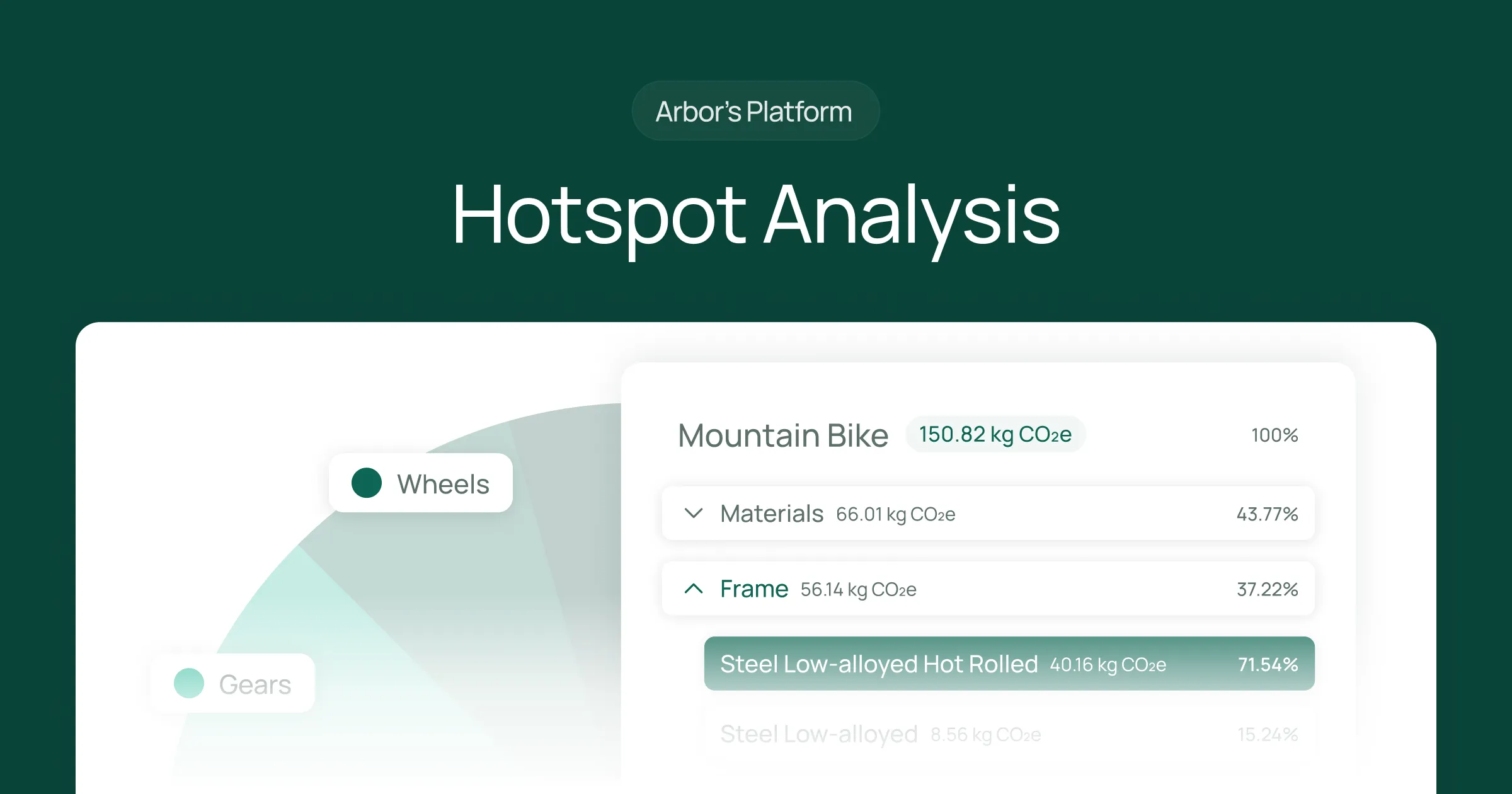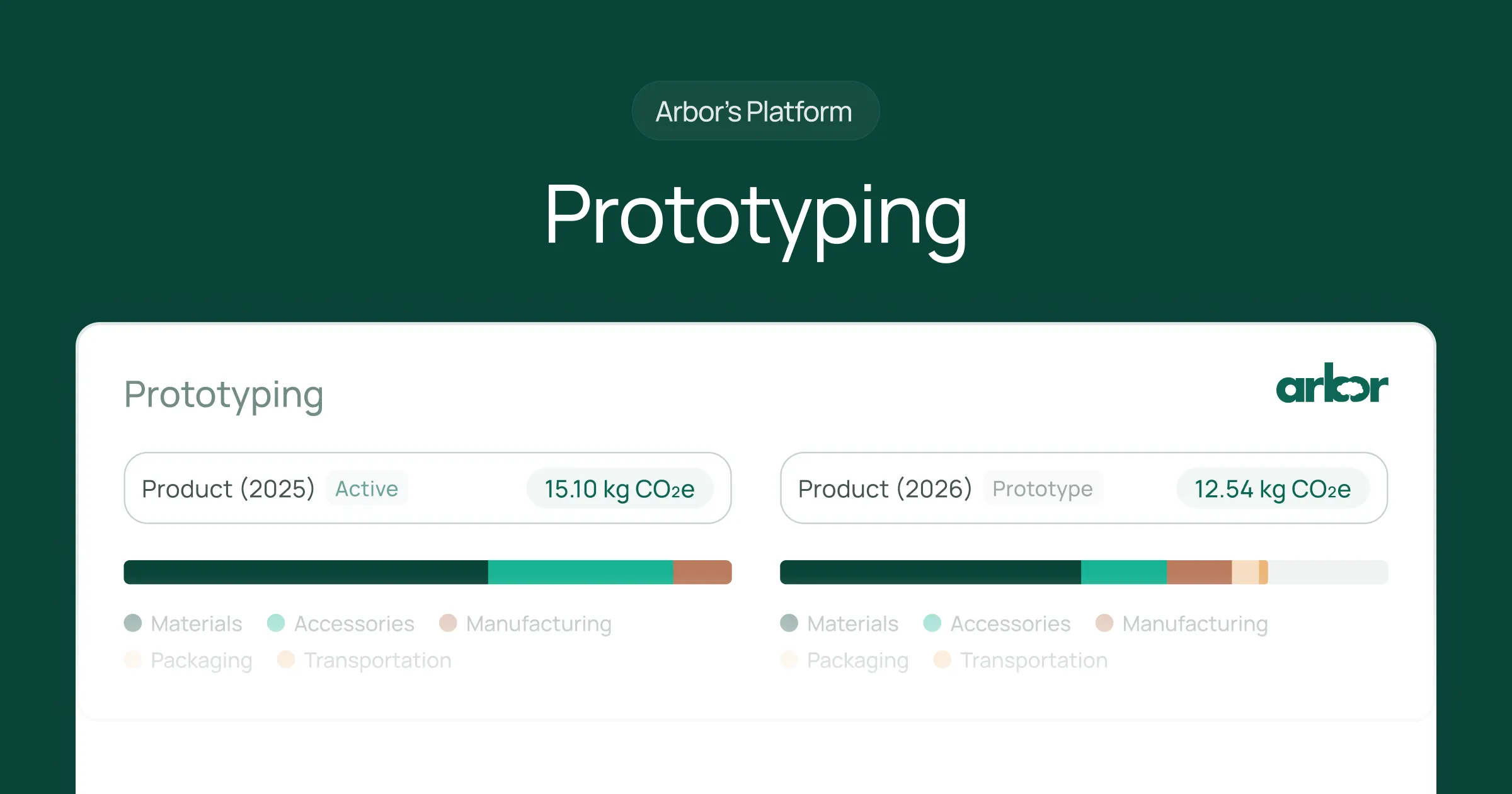- France’s AGEC Law & Decree 2022-748 requires mandatory environmental labelling for textiles to drive a circular economy.
- Brands must disclose recycled content, traceability, microplastic risks, and disposal guidance.
- Compliance is phased by company revenue, with full enforcement by 2027.
- Non-compliance risks fines of up to 5% of revenue and product sales suspension.
- The French Eco-Score will assess textile environmental impact, aligning with EU standards by 2026.
- Arbor helps brands automate emissions measurement, ensuring accurate compliance and sustainability insights.
France is leading the charge in environmental accountability with its Anti-Waste for a Circular Economy Law (AGEC) and Decree 2022-748. These regulations are set to revolutionize how businesses operate by mandating environmental labelling on consumer products.
This comprehensive guide provides actionable insights into these regulations, helping textile industry stakeholders understand compliance requirements, implementation strategies, and the broader implications for global sustainability practices.
What is France's Anti-Waste for a Circular Economy Law (AGEC)?
Enacted in February 2020, the AGEC Law (Loi Anti-Gaspillage pour une Économie Circulaire) reflects France's commitment to reducing textile waste by 50% by 2030. It aims to transition from a linear "take, make, use, and toss" model to a circular economy focused on reducing carbon emissions.
AGEC builds on the European Union’s Circular Economy Action Plan, introducing Extended Producer Responsibility (EPR) schemes that require brands to fund recycling programs based on their market share.
What is decree 2022-748?
Decree 2022-748 brings Articles 13 and 15 of the AGEC Law into action, specifically targeting textile products through mandatory environmental labelling.
The decree enforces the "polluter pays" principle, directly assigning manufacturers financial responsibility for environmental damage. This legislation is designed to provide consumers with transparent, accessible information about the environmental qualities and characteristics of the products they purchase.
How does environmental labelling work?
The decree establishes a four-pillar compliance framework:
- Material Composition Disclosure: Brands must quantify the percentage of recycled content and identify any hazardous substances exceeding 0.1% by weight.
- Manufacturing Transparency: Full traceability is required for three key production stages: yarn formation, dyeing/printing, and final assembly.
- Microplastic Mitigation: Products containing more than 50% synthetic fibres must include warnings about microfiber pollution.
- End-of-Life Guidance: Clear instructions on recycling and disposal must be provided, aligning with France's national waste management protocols.
These labels aim to provide assurance to consumers, ensuring that products meet the criteria of the anti-waste law.
What are the key requirements of AGEC decree 2022-748?
Each environmental label must include specific data elements:
- Recycled Content: The percentage by mass, with a detailed material breakdown, following the EN 15343:2007 standard.
- Microfibers: A warning is required if the synthetic fibre content is 50% or greater, tested using the ISO 1833-24:2010 method.
- Traceability: GPS coordinates for the three key production stages (yarn formation, dyeing/printing, and final assembly) verified through blockchain records.
- Hazardous Substances: CAS numbers for Substances of Very High Concern (SVHCs) present at ≥0.1%, compliant with REACH Annex XIV.
The decree also mandates machine-readable QR codes containing:
- JSON-LD formatted product data
- PDF accessibility for visually impaired consumers
- API integration capability for e-commerce platforms
Labels must be updated quarterly to reflect any material changes in supply chains or manufacturing processes.
When does AGEC become mandatory?
While Decree 2022-748 officially took effect on January 1, 2023, its enforcement is being rolled out in phases based on company revenue:
- Phase 1 (2023-2024): Applies to brands with annual revenue exceeding €50 million in France.
- Phase 2 (2025-2026): Includes companies with a French turnover between €20 and €50 million.
- Phase 3 (2027+): Extends to all market participants, regardless of size.
Who needs to comply with AGEC?
The environmental labelling requirements apply to all producers, importers, and distributors placing textile products on the French market, whether they are French or foreign entities. This includes any apparel company that operates within the French market, irrespective of its origin.
Even international brands must comply if they operate in France, including providing translated labels in French. Smaller apparel companies with a turnover above €10 million, or those placing more than 10,000 waste-generating units into the French market annually, have until January 2025 to comply.
Why should you care about AGEC?
- Global Trend: France's initiative is part of a broader European push to regulate green transitions, serving as a model for the upcoming EU Ecodesign for Sustainable Products Regulation (ESPR).
- Eliminate Greenwashing: AGEC empowers consumers to make informed decisions and effectively manage textile and packaging waste, curbing the practice of greenwashing among fashion brands.
- Supply Chain Resilience: Full material traceability reduces disruption risks.
- Regulatory Foresight: Early adoption prepares for impending EU-wide regulations.
Complying with AGEC isn't merely about adhering to regulations; it's an opportunity for businesses to enhance their operations and market positioning through sustainability.
What are the penalties for non-compliance?
Non-compliance can result in significant financial repercussions. Penalties can escalate from 3% of annual revenue for first offences to 5% for repeat violations, capped at €50,000 per SKU for SMEs. Additionally, non-compliant products may face immediate sales suspension until corrective actions are validated through ADEME's online compliance portal.
The French Eco-Score: An Overview
The French Eco-score is a methodology designed to assess and communicate the environmental impact of textile products. As part of the Climate and Resilience Law, it is also known as "Environmental Cost."
It builds upon life cycle assessments and evaluates 16 environmental indicators, including carbon emissions, water consumption, and impact on biodiversity. While the French methodology has been aligned with the European PEF method, efforts are underway to further harmonize the Eco-score and PEFCR (Product Environmental Footprint Category Rules).
Timeline for the French Eco-Score
- January 2025: Notification to the European Commission.
- April 2025 to April 2026: Voluntary Display phase, where brands can calculate and submit their environmental costs on a public portal.
- From April 2026: General Deployment of the Display, allowing third parties to calculate and submit scores if a brand has not already done so.
Data required to calculate the French environmental cost for textiles
To calculate the French Environmental Cost for textiles, the following data is needed:
- The product category
- The mass/weight of the finished product
- The nature and percentage of materials, provided they represent at least 2% of the product's total mass and 5% of its total impact
- The geographical origin of the weaving/knitting stage
- The geographical origin of the finishing or printing stage
- The geographical origin of the manufacturing stage
Optional parameters include the remanufactured nature of the product, the number of references in the market segment, and the size of the company.
Included clothing categories
The Eco-score calculation relates to a single size, applicable to all other sizes within the same segment. The segments considered are:
- Boxers/Briefs
- Socks
- Shirts
- Jeans
- Skirts/Dresses
- Swimwear
- Coats/Jackets
- Trousers/Shorts
- Sweaters
- T-shirts/Polos
Lingerie products are included if they meet the criteria of composition in textile fibres (at least 80% of the total mass of the product).
How can Arbor help you with AGEC compliance?
Arbor automates the entire process of measuring lifecycle emissions, improving efficiency and helping businesses avoid errors. Arbor’s platform can handle a high volume of SKUs, making it ideal for brands with extensive product lines.
Arbor empowers businesses with reliable numbers through precision and region-specific data analytics. By streamlining carbon calculations, Arbor saves time and reduces human error, enabling businesses to focus on strategic initiatives.
Summary
France's climate labels mandate presents both a compliance challenge and a strategic opportunity. By embracing transparency and taking proactive steps, brands can gain a competitive edge, build consumer trust, and contribute to a more sustainable future.
The legislation's true impact lies in its potential to transform environmental accountability from a marketing exercise into a quantifiable, auditable business metric.
Measure your emissions with Arbor
Measure your carbon emissions with Arbor
Simple, easy carbon accounting.




%20Directive.webp)


.webp)











%20Arbor.avif)





%20Arbor.avif)


.avif)






%20Arbor%20Canada.avif)

.avif)
%20Arbor.avif)
.avif)






_.avif)
.avif)
%20Arbor.avif)




%20Software%20and%20Tools.avif)





.avif)
.avif)




%20EU%20Regulation.avif)












.avif)


%20Arbor.avif)









_%20_%20Carbon%20101.avif)







.avif)

.avif)
.avif)









